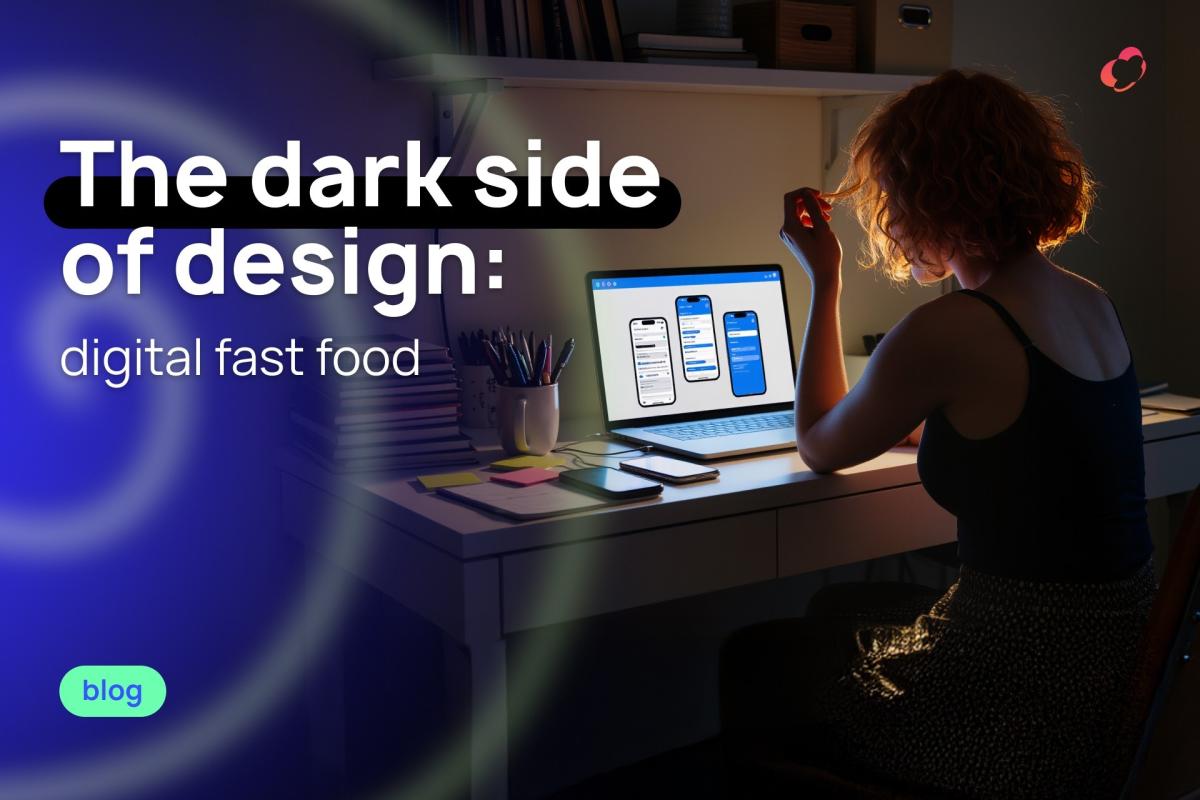
Senior Designer at Noveo, Ludmila, shares thoughts on modern design ethics.
Sometimes I catch myself scrolling through my feed not because I want to, but because I simply can't stop. And every time I notice this, it's a bit frightening: after all, I am part of this industry myself. I'm a designer — the person who helps others "capture user attention." But where does engagement end and addiction begin?
Today I want to talk about the dark side of design — about the decisions we designers make every day, often without even considering the consequences.
Why It's Trendy—and Why It Matters
This topic is currently discussed at every conference because it concerns all of us in terms of ethics, responsibility, and mental health.
The world is accustomed to talking about design as beauty and convenience, but rarely remembers its manipulative power. We live in the era of dopamine interfaces, where every notification, swipe, and micro-interaction is calculated to bring us back, again and again.
Where Is the Line Between Persuasion and Manipulation?
Persuasive design helps users achieve their goals: subscribe, learn something new, take care of themselves.
Manipulative design forces users to do what benefits the product, not the person.
Examples:
- "Hidden close buttons" in pop-up windows where closing an ad is harder than subscribing.
- Push notifications disguised as "personal" messages ("Someone mentioned you!" — when it's just an ad).
- Infinite scroll, turning minutes into hours.
Each of these techniques is a small dopamine hit. We designers don't just create interfaces — we manage attention and, to some extent, consciousness.
The Designer's Responsibility for User Psychological Comfort
When we discuss metrics—retention, DAU, CTR—we rarely talk about impact. But what if KPIs included not only engagement but also users' emotional state?
Imagine a product where the designer asks:
"Will the user feel better after spending 10 minutes here? Or worse?"
This simple check changes the approach. We start seeing not just numbers, but the people behind them.
☠️ Toxic Patterns That Make Us Addicted
- Infinite scroll — disrupts natural completion cycles. No "end" — no satisfaction.
- Temporary bonuses and rewards (in games, shopping) — encourage returning out of fear of missing out.
- Personalized notifications — cause anxiety: "what if I miss something?"
- Social comparison — likes, ratings, streaks: everything that makes you feel "less successful."
Each of these patterns is an engagement tool. But in unskilled (or cynical) hands, they become weapons.
What Is "Healthy" (Human) Design
Human design is an approach where the person matters more than the metric.
It's about respecting attention, emotions, and time.
Principles of Healthy Design:
- Transparency: the user understands why they see certain content.
- Control: ability to turn off notifications, take a pause, limit time.
- Mindfulness: the interface doesn't impose but supports the user's goal.
- Empathy: the designer asks "how does this feel?" before release.
Examples:
- YouTube and TikTok started implementing "take a break" reminders.
- Apps like Headspace and Stoic build design around care, not retention.
- Some brands experiment with "slow design" — interfaces without aggressive stimuli.
We often say that design solves problems. But perhaps it's time to admit that sometimes it creates them.
Dopamine design makes us all slightly more addicted, anxious, and distracted. But we — designers, product managers, analysts — have a chance to change the game.
By creating products that respect people, we can return design to its true purpose: to serve, not to manipulate.